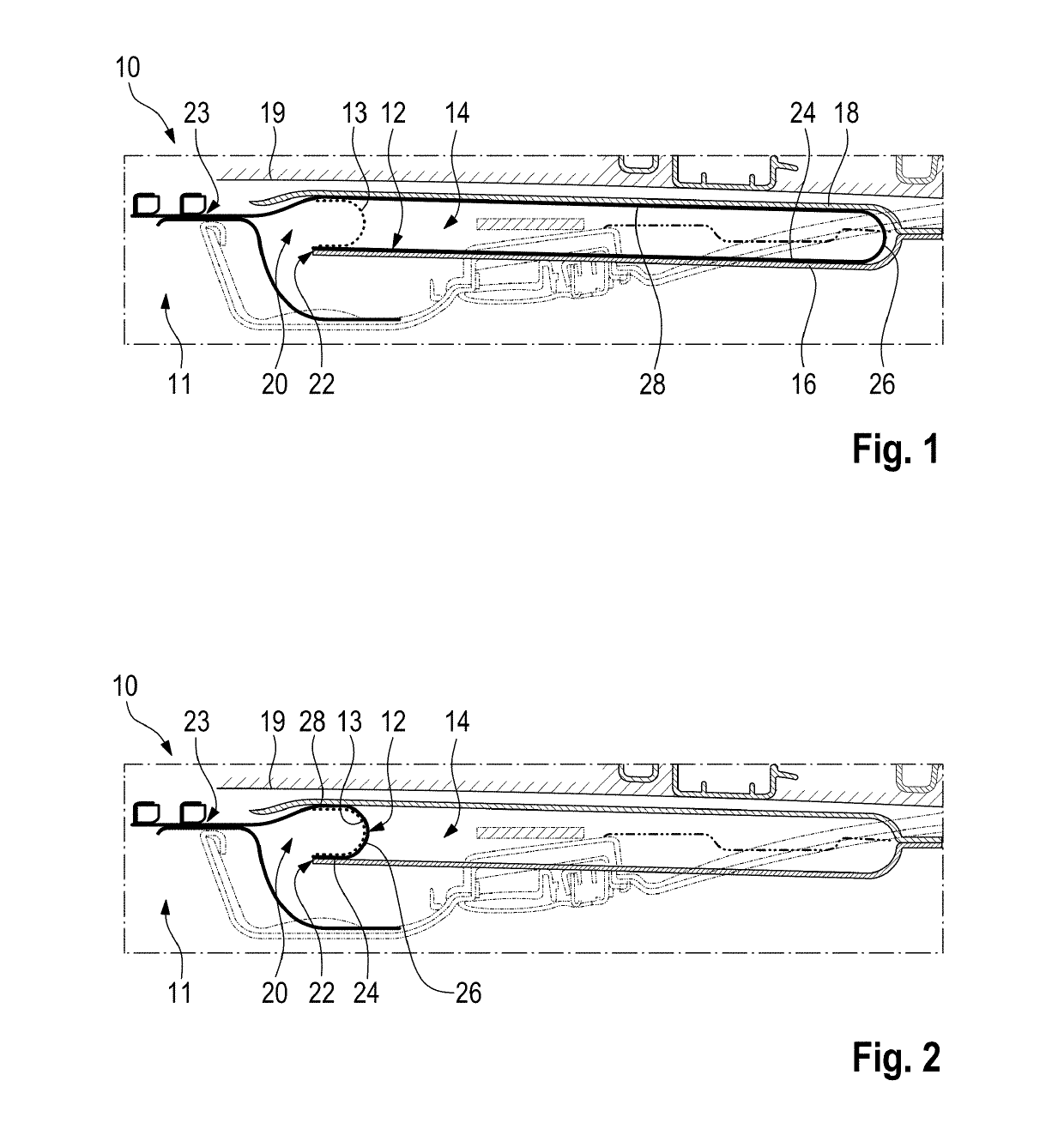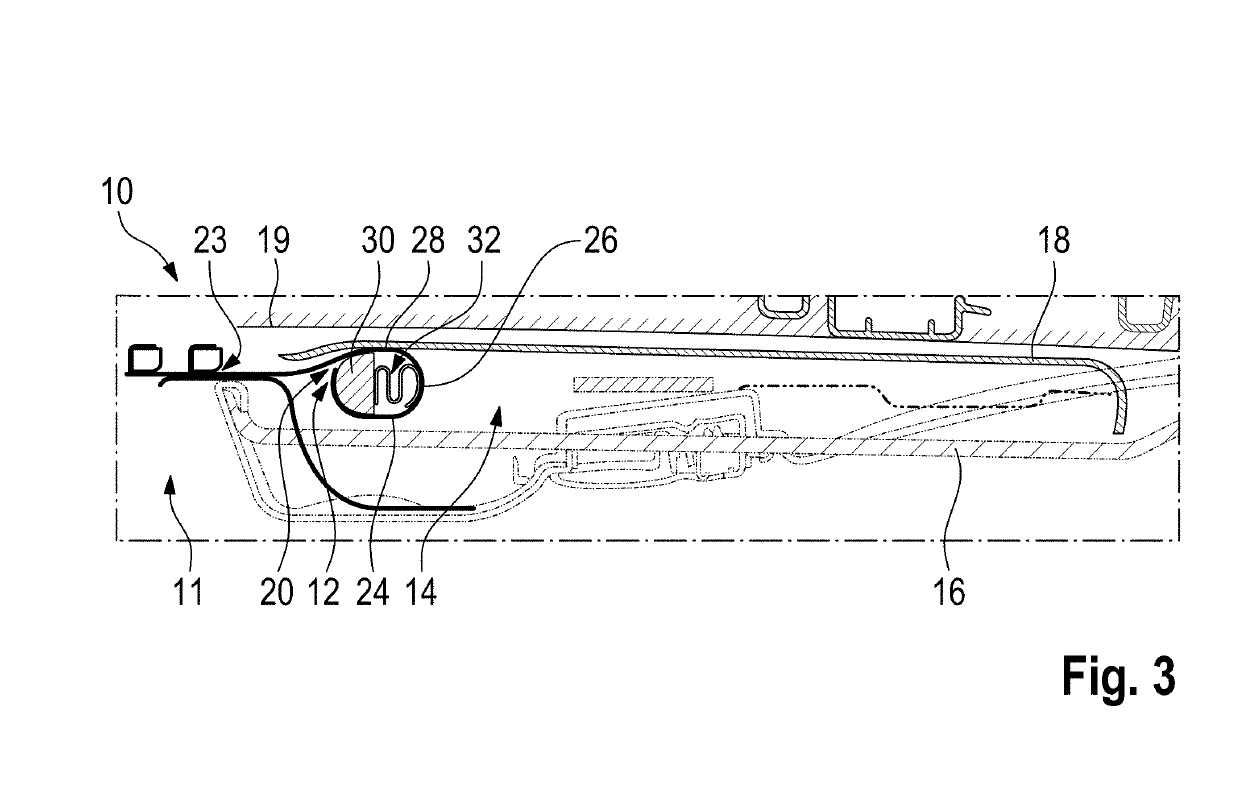Shading blind for a roof window of a motor vehicle
a technology for motor vehicles and roof windows, which is applied in the direction of roofs, windows, vehicle components, etc., can solve the problems of reducing assembly effort and saving costs, and achieve the effects of saving costs, increasing headroom of occupants, and less spa
- Summary
- Abstract
- Description
- Claims
- Application Information
AI Technical Summary
Benefits of technology
Problems solved by technology
Method used
Image
Examples
Embodiment Construction
[0021]FIGS. 1 to 3 each show a longitudinal section through a portion of a shading blind 10 as used in roof openings of motor vehicles. The shading blind 10 is used to allow light and / or ambient air to enter at least partially through a roof opening into a vehicle interior 11 or to keep it at least partially away from this interior.
[0022]The shading blind 10 has a roller blind element 12 which is adjustable between a retracted position shown in FIG. 1 and an extended position shown in FIGS. 2 and 3.
[0023]The roller blind element 12 comprises a fabric web with flexible guide structures at its two lateral edges, each of which is, for example, a plastic strip. With these guide structures, the roller blind element 12 is guided in guide rails 13 at least in an area visible from the passenger compartment of the motor vehicle during adjustment between the extended and retracted positions.
[0024]Furthermore, the roller blind element 12 has a front edge (the edge which is visible to an occupa...
PUM
 Login to View More
Login to View More Abstract
Description
Claims
Application Information
 Login to View More
Login to View More - R&D
- Intellectual Property
- Life Sciences
- Materials
- Tech Scout
- Unparalleled Data Quality
- Higher Quality Content
- 60% Fewer Hallucinations
Browse by: Latest US Patents, China's latest patents, Technical Efficacy Thesaurus, Application Domain, Technology Topic, Popular Technical Reports.
© 2025 PatSnap. All rights reserved.Legal|Privacy policy|Modern Slavery Act Transparency Statement|Sitemap|About US| Contact US: help@patsnap.com


